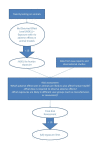Assessment of methods used to determine the safety of the topical insect repellent N,N-diethyl-m-toluamide (DEET)
- PMID: 24892824
- PMCID: PMC4041896
- DOI: 10.1186/1756-3305-7-173
Assessment of methods used to determine the safety of the topical insect repellent N,N-diethyl-m-toluamide (DEET)
Abstract
N,N-diethyl-m-toluamide (DEET) has been registered for commercial use as an insect repellent for over five decades, and is used widely across the world. Concerns over the safety of DEET first emerged during the 1980s after reports of encephalopathy following DEET exposure, particularly in children. However, the role of DEET in either the illness or deaths was and remains purely speculative. In response to these cases a number of reviews and investigations of DEET safety were carried out. Here we examine the methods used and information available to determine the safety of DEET in humans. Animal testing, observational studies and intervention trials have found no evidence of severe adverse events associated with recommended DEET use. Minor adverse effects noted in animal trials were associated with very large doses and were not replicated between different test species. The safety surveillance from extensive humans use reveals no association with severe adverse events. This review compares the toxicity assessment using three different models to define the risk assessment and safety threshold for DEET use in humans and discusses the clinical consequences of the thresholds derived from the models.The theoretical risks associated with wearing an insect repellent should be weighed against the reduction or prevention of the risk of fatal or debilitating diseases including malaria, dengue, yellow fever and filariasis. With over 48 million European residents travelling to regions where vector borne diseases are a threat in 2009, restricting the concentration of DEET containing repellents to 15% or less, as modelled in the 2010 EU directive, is likely to result in extensive sub-therapeutic activity where repellents are infrequently applied. Future European travellers, as a consequence of inadequate personal protection, could potentially be at increased risk of vector borne diseases. Risk assessments of repellents should take these factors into account when setting safe limits.
Figures
Similar articles
-
An updated review on the safety of N, N-diethyl-meta-toluamide insect repellent use in children and the efficacy of natural alternatives.Pediatr Dermatol. 2024 May-Jun;41(3):403-409. doi: 10.1111/pde.15531. Epub 2024 Jan 19. Pediatr Dermatol. 2024. PMID: 38682561 Review.
-
Pharmacokinetics, formulation, and safety of insect repellent N,N-diethyl-3-methylbenzamide (deet): a review.J Am Mosq Control Assoc. 1998 Mar;14(1):12-27. J Am Mosq Control Assoc. 1998. PMID: 9599319 Review.
-
[Prevention with repellent in children].Arch Pediatr. 2009 Oct;16 Suppl 2:S115-22. doi: 10.1016/S0929-693X(09)75313-8. Arch Pediatr. 2009. PMID: 19836673 French.
-
DEET-based insect repellents: safety implications for children and pregnant and lactating women.CMAJ. 2003 Aug 5;169(3):209-12. CMAJ. 2003. PMID: 12900480 Free PMC article.
-
DEET: a review and update of safety and risk in the general population.J Toxicol Clin Toxicol. 2003;41(6):831-9. doi: 10.1081/clt-120025348. J Toxicol Clin Toxicol. 2003. PMID: 14677793 Review.
Cited by
-
Comparison of in vitro Killing Effect of N, N-Diethyl-Meta-Toluamide (DEET) versus Permethrin on Demodex folliculorum.Clin Cosmet Investig Dermatol. 2022 Jul 9;15:1301-1307. doi: 10.2147/CCID.S376454. eCollection 2022. Clin Cosmet Investig Dermatol. 2022. PMID: 35847418 Free PMC article.
-
Yellow Fever in Non-Human Primates: A Veterinary Guide from a One Health Perspective.Vet Sci. 2025 Apr 6;12(4):339. doi: 10.3390/vetsci12040339. Vet Sci. 2025. PMID: 40284841 Free PMC article. Review.
-
Evaluating repellence properties of catnip essential oil against the mosquito species Aedes aegypti using a Y-tube olfactometer.Sci Rep. 2024 Jan 27;14(1):2269. doi: 10.1038/s41598-024-52715-y. Sci Rep. 2024. PMID: 38280895 Free PMC article.
-
Urinary concentrations of 3-(diethylcarbamoyl)benzoic acid (DCBA), a major metabolite of N,N-diethyl-m-toluamide (DEET) and semen parameters among men attending a fertility center.Hum Reprod. 2017 Dec 1;32(12):2532-2539. doi: 10.1093/humrep/dex327. Hum Reprod. 2017. PMID: 29077936 Free PMC article.
-
Evaluation of standard field and laboratory methods to compare protection times of the topical repellents PMD and DEET.Sci Rep. 2018 Aug 22;8(1):12578. doi: 10.1038/s41598-018-30998-2. Sci Rep. 2018. PMID: 30135603 Free PMC article.
References
-
- Nentwig G. Use of repellents as prophylactic agents. Parasitol Res. 2003;90(Suppl 1):S40–S48. - PubMed
-
- Barnard DR. Repellents and Toxicants for Personal Protection. Position Paper. Global Collaboration for Development of Pesticides for Public Health. Geneva, Switzerland: World Health Organization; 2000. [Global Collaboration for Development of Pesticides for Public Health (Series editor)]
-
- U.S. Environmental Protection Agency. Insect Repellent Product Labeling Consumer Survey Report. Washington DC, USA: US Environmental Protection Agency Office of Pesticide Programs; 2012.
-
- Kline & Company. Consumer Markets for Pesticides and Fertilizers USA. Parsippany, USA: Kline & Company, Incorporated; 2004.
Publication types
MeSH terms
Substances
LinkOut - more resources
Full Text Sources
Other Literature Sources


